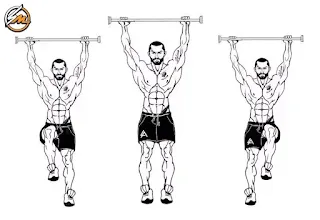It's a fantastic goal to have a lean body, and I'm sure many of you have it. It's also a difficult goal to attain. But it doesn't have to be a hassle. Believe me when I say that there are methods to attain your fitness goals while still having fun. It's critical to enjoy your time at the gym in the long run.
Are you looking to create a nice abdominal strap, with a visible “six-pack” and a flat stomach? This is a dream that many practitioners have realised by just following the abdominal development suggestions found in this section. The biggest challenge in developing prominent abs, unlike other muscle groups, is a more apparent dietary rigidity than other muscles. Indeed, we all have abs. However, you must not only grow them but also remove the fatty tissue that covers them in order to notice them.
Anatomy of the abdominals: a muscle group made up of 4 muscles
Rectus Abdominis
in the front of the pelvis, draped between the ribs and the pubic bone When this muscle contracts, it forms the ‘six pack' of bulges and bumps. The rectus abdominis is primarily responsible for moving the body between the ribs and the pelvis.
Transversus Abdominis
the thickest layer of muscle Its primary functions are to maintain internal abdominal pressure and stabilise the trunk.
External oblique Muscles
Each side of the rectus abdominis has these. The trunk can twist to the opposite side of whichever external oblique is contracting, thanks to the external oblique muscles. The right external oblique, for example, contracts to turn the body to the left.
Internal oblique Muscles
These are placed immediately inside the hipbones and flank the rectus abdominis. They act in the opposite way as the external oblique muscles. Twisting the trunk to the left, for example, needs the internal oblique on the left side and the external oblique on the right side to contract simultaneously.
Best 5 ABS Workout By Lazar Angelov
Arms-High Partial Sit Up
One approach to help strengthen your core is to incorporate sit-ups into your routines. It can also aid digestion by strengthening the abdominal muscles that allow the intestines to work properly. You may do this ab exercise anywhere, whether inside or outside of the gym, because it only requires your body weight.
One of the many reasons sit-ups are so popular is that they're easy to vary (for example, by doing them on an incline or while carrying weights), allowing you to continually challenging yourself as your core strength improves.
Exhale on your way up and inhale as you return to the start position to complete the ideal sit-up. Keep your feet, hips, and knees aligned with knees bent and feet flat on the floor to perform the perfect sit-up.
Decline Crunch
Place your legs on a decline bench and secure them. Keep your elbows in and place your hands on either side of your head. Start rolling your shoulders off the bench by pressing the small of your back into it. While contracting your abdominals, push down hard with your lower back. As you do so, exhale. You should only elevate your shoulders off the bench for around 4 inches. Maintain a low back position on the bench. Begin to slowly come down to the beginning point after holding the contraction for a second. While doing so, take a deep breath.
Hanging Knee Raise
A bodyweight core exercise, the hanging knee raise can help you increase abdominal strength, endurance, and stamina. It can also be used to ease into more complex core workouts such as leg lifts, L-Sits, and other gymnastics motions.
Take an overhead grip on a bar with your hands somewhat wider than shoulder-width. Pull the belly button into the body by pressing the thighs together and pointing the toes. Slowly pull the knees to the chest, being sure to also pull the heels up towards the hips, once you've acquired body control and a flat lower back. When the knees are almost to the chest, pause and contract the abdominals as hard as you can. Slowly descend the knees and legs in the same manner as you rose them, keeping sure not to lose back tension or body alignment. Hold and restore control of the body while hanging with your legs together and toes pointing slightly out in front of you, then repeat for reps.
Lying Cable Crunch
To begin, attach a rope attachment to a low pulley cable machine and lie down in front of it with your head close to the pulley. Grab the rope with your palms facing inward and pull it up to your head while keeping your legs bent. Slowly crunch up using your abs to lift your shoulders off the floor, then reach up as far as you can towards your knees until you feel a stretch. A rep for as many reps and sets as desired, then return to the beginning position.
Reverse Crunch
The reverse crunch is a core exercise that works the lower abdominal muscles. Lay flat on your back with your hands beneath your hips to conduct a reverse crunch. Bend your knees and raise them towards your head, slightly pulling them upward towards the end of the action. To accomplish one repetition, lower your feet to slightly above the floor. To proceed on your path to a tight, toned waistline, incorporate reverse crunches into your daily core practice.
Related article: The World's Most famous Fitness Model













0 Comments